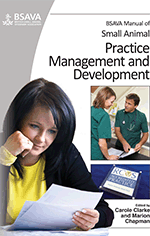
Full text loading...

The public is increasingly questioning the competence of medical practitioners and demanding evidence of good practice, rather than just relying on professional qualifications as a guarantee, and this is spilling over into veterinary practice. This chapter includes evidence-based veterinary medicine and ‘best practice', and clinical audit.
Clinical governance, Page 1 of 1
< Previous page | Next page > /docserver/preview/fulltext/10.22233/9781910443156/9781910443156.28-1.gif

Full text loading...






